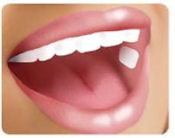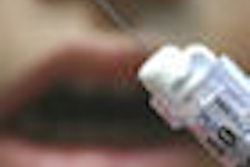
Imagine a drug that has 30 times as much pain-relieving power as morphine but that doesn't addict patients. That's what researchers hope they've found in buprenorphine. And two recent studies have brought the drug closer to the dental office.
— Al Medwar, BioDelivery Sciences
Actually, buprenorphine is already on the market under the brand names Buprenex, Subutex, and Suboxone, although dentists wanting to administer it might have to go off-label. Addiction clinics use it to wean patients off opioid dependence, much in the way they use methadone. And physicians sometimes use it as an analgesic. For this purpose, it is only FDA-cleared in the form of an intramuscular injection.
But a recent clinical trial found that it took the edge off the pain of oral surgery when mixed into a bupivacaine nerve block. And a new drug company, BioDelivery Sciences International, last month reported similarly promising results with a novel vehicle for administering the drug.
"It has the efficacy of morphine, but it doesn't cause the euphoria [seen] with most opioids, so the hope is that it would cause less addiction," said Al Medwar, vice president of marketing and corporate development for BioDelivery.
Special delivery
BioDelivery is testing buprenorphine delivered in what it calls a bioerodible mucoadhesive (BEMA). BEMA consists of a small polymer film that is applied to buccal membranes. It adheres in less than five seconds, then it dissolves in 15 to 30 minutes as the drug crosses the membrane into the bloodstream, according to the company.
 |
| BioDelivery Sciences International is testing its novel drug delivery vehicle, bioerodible mucoadhesive (BEMA), with buprenorphine. Image courtesy of BioDelivery. |
BioDelivery already sells another product, Onsolis, in which fentanyl is delivered through BEMA. And it is working on an oral fungicide.
"BEMA avoids the need to go through the gastrointestinal tract," Medwar said. "It's faster this way." He said that 75% of the buprenorphine was bioavailable through the BEMA vehicle, versus 25% through the sublingual tablets used for Suboxone. The analgesia can last eight hours, after which time patients might take a second dose, according to BioDelivery.
The company just completed phase II of the clinical research required by the U.S. FDA before the drug can gain marketing approval. In the study, researchers divided 153 patients who had third molars extracted into five groups: three of the groups received various formulations of buprenorphine, one got a placebo, and the other got 5 mg of oxycodone.
Asking the patients to rate their pain, the researchers found that a 0.5 mg dose of BEMA buprenorphine improved analgesia significantly more than the placebo and even more than the oxycodone, whose effects were not statistically different from those of the placebo. In a subset of patients with severe pain, buprenorphine was even more effective.
BioDelivery announced these results in a press release, but it has not released the complete data produced by this study. BEMA buprenorphine adverse events "were typical of those seen with a strong opioid," the company said.
Nerve-block cocktail
In a separate study, researchers at Srinagar Medical College in India tried combining buprenorphine with bupivacaine to see if they could produce long-term pain relief in patients undergoing oral surgery (Journal of Oral and Maxillofacial Surgery, December 2009, Vol. 67:12, pp. 2571-2576).
The investigators selected 50 patients scheduled for such procedures as incision and drainage of abscesses, enucleation of cysts, apicectomy, and third-molar extraction. Twenty-four had procedures in the maxilla and 26 in the mandible.
The investigators randomly divided the patients into two groups similar in demographics and the type of procedure they underwent. Before the surgery, dentists administered nerve blocks consisting of 0.5% bupivacaine and 1:200,000 epinephrine alone to one group, and the same formula mixed with 0.3 mg of buprenorphine to the other group, with the injection site varying depending on the procedure. A different group of dentists then performed the surgery, and a third group asked the patients to rate their pain.
The researchers found that pain relief lasted a mean time of 8.34 (± 0.11 hours) for those patients who only got the bupivacaine and epinephrine, but 28.18 (± 1.02 hours) when buprenorphine was added to the mix, a very significant difference (p < 0.001). By the end of 12 hours, all the patients who didn't get buprenorphine had asked for additional pain relief, compared to only 8% of the buprenorphine patients.
"The efficacy and duration is consistent with what we know and hear about buprenorphine," said Medwar, commenting on the Srinagar study. "So far, we have only done short, single-dose studies of our buccal formulation, and the duration has exceeded our expectations and the analgesic efficacy was very good."
The Srinagar investigators weren't surprised. An intramuscular injection of 0.3 mg of buprenorphine is equivalent to 10 mg of morphine, they wrote, citing earlier research. And it lasts so much longer that it provides a significant pain-relief boost to the effects of bupivacaine.
"In view of the absence of adverse side effects in this small group of patients, the addition of buprenorphine to bupivacaine for intraoral nerve blocks in patients undergoing same-day surgery may be a way to provide postoperative analgesia for outpatients," they concluded.
In other words, "Morphine, move over."
Copyright © 2010 DrBicuspid.com



















